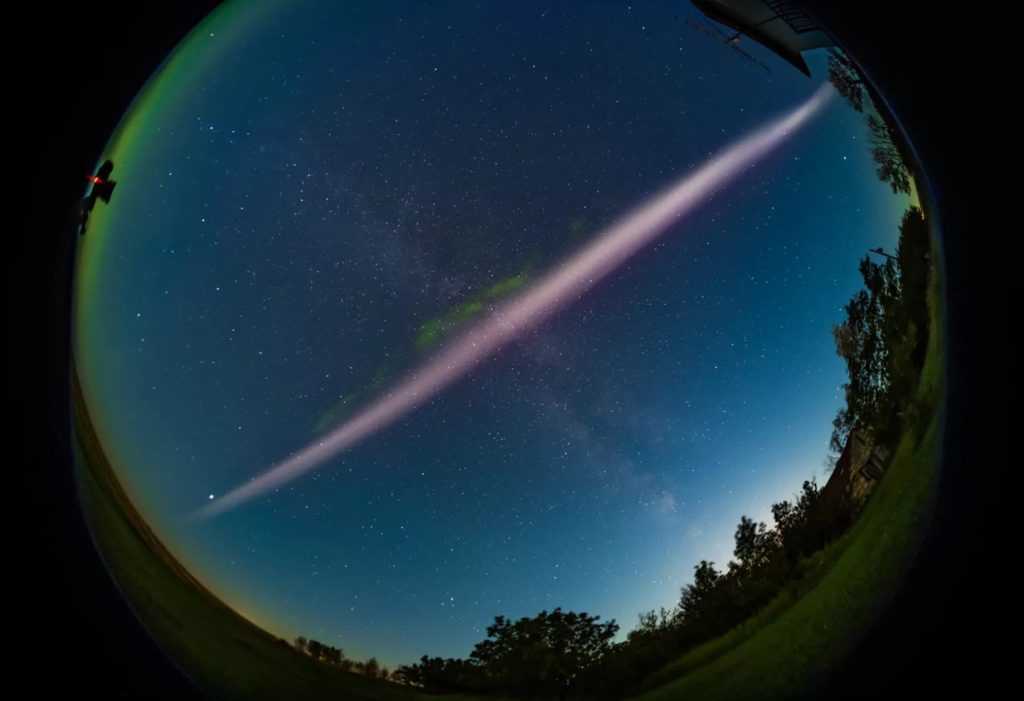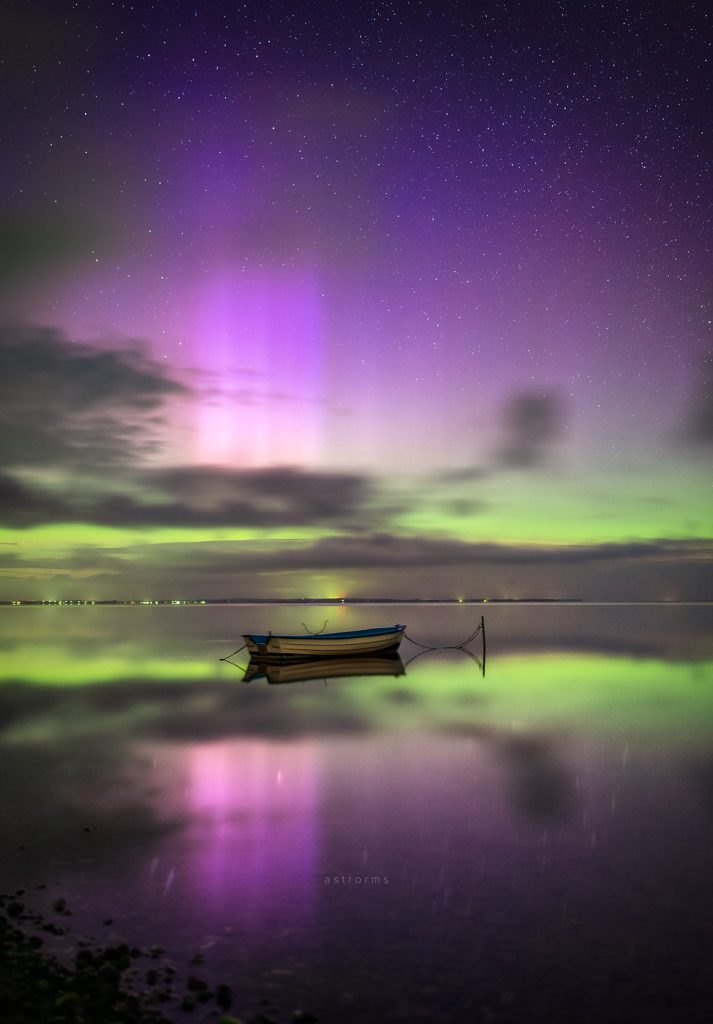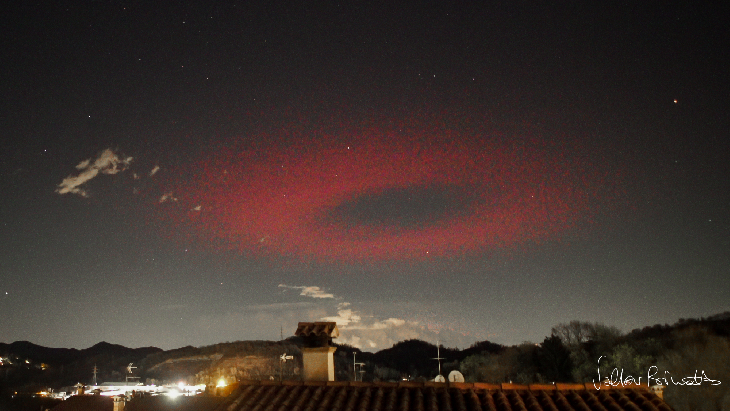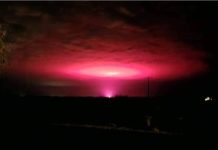
In the dark of Sunday night and Monday morning (Aug. 7 and 8), a surprise solar storm slammed into Earth, showering our planet in a rapid stream of charged particles from the sun.
The resulting clash of solar and terrestrial particles in Earth’s atmosphere triggered stunning auroras to appear at much lower latitudes than usual (as far south as Pennsylvannia). In Wayne County, PA, Sujay Singh photographed red auroras. Auroras were also sighted in Montana and the Dakotas.
The G2-class (moderately strong) geomagnetic storm also produced the first summer auroras in Denmark in 5 years.

And, in southern Canada, the sudden solar storm triggered a surprise cameo from the mysterious sky phenomenon known as STEVE.
Alan Dyer, an astronomy writer and photographer based in southern Alberta, Canada, caught the wispy ribbons of green and violet light on camera as they shot through the sky.
“STEVE lasted about 40 minutes, appearing as the … aurora to the north subsided,” Dyer wrote on Twitter on Aug. 8. “STEVE was ‘discovered’ here so he likes appearing here more than anywhere else!”
A great showing of @STEVEPhenomena last night, Aug 7-8, arcing across the sky, and showing his green fingers briefly for about 2 minutes. STEVE lasted about 40 minutes, appearing as the Kp5 aurora to the north subsided. This was 12:30 am MDT from southern Alberta. @TweetAurora pic.twitter.com/EtKF6udfFk
— Alan Dyer (@amazingskyguy) August 8, 2022
As Dyer noted, the strange sky glow called STEVE was first described by citizen scientists and aurora hunters in northern Canada in 2017. STEVE is typically composed of an enormous ribbon of purplish light, which can hang in the sky for an hour or more, accompanied by a “picket fence” of green light that usually disappears within a few minutes.
The glowing river of light may look like an aurora, but it’s actually a unique phenomenon that was considered “completely unknown” to science upon its discovery. Today, scientists have a slightly better idea of what’s going on.
STEVE (short for “strong thermal velocity enhancement”) is a long, thin line of hot gas that slices through the sky for hundreds of miles. The hot air inside STEVE can blaze at more than 5,500 degrees Fahrenheit (3,000 degrees Celsius) and move roughly 500 times faster than the air on each side of it, satellite observations have shown.
Whereas the northern lights occur when charged solar particles bash into molecules in Earth’s upper atmosphere, STEVE appears much lower in the sky, in a region called the subauroral zone. That likely means solar particles aren’t directly responsible for STEVE.
However, STEVE almost always appears during solar storms like Sunday’s, showing up after the northern lights have already begun to fade.
One hypothesis suggests that STEVE is the result of a sudden burst of thermal and kinetic energy in the subauroral zone, somehow triggered by the clash of charged particles higher in the atmosphere during aurora-inducing solar storms.
However, more research is needed to uncover the true secrets of STEVE. In the meantime, we can simply bask in its otherworldly glow and wave back at its twinkling green fingers. [Live Science]
Thank you Steve Quayle for your help and support!
StrangeSounds.org has been banned from ad networks and is now entirely reader-supported CLICK HERE TO SUPPORT MY WORK… I will send you a small gemstone if you give more than 25$… Thanks in advance!
Another way to support my work is by signing in to get FREE information about how to invest in GOLD, SILVER and other PRECIOUS METALS to limit the effects of inflation on your IRA/4001K… You won’t regret it!
You will finally find some great affiliate products that I recommend you to add to your disaster & preparedness kit:
- Protect your home and car with the best EMP, solar flares and lightning shield available…
- GOLD; SILVER; It’s time to invest in PRECIOUS METALS to fight INFLATION and achieve the retirement peace of mind you deserve…
- Stock up on Iodine tablets for the next nuclear disaster…
- Health Ranger Store: Buy Clean Food and Products to heal the world…
- You will ALWAYS have electricity with this small portable SOLAR power station…
- Qfiles is another great site for alternative news and information…













The calm warning of Mother Earth.
Never seen that before.?